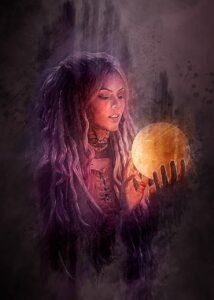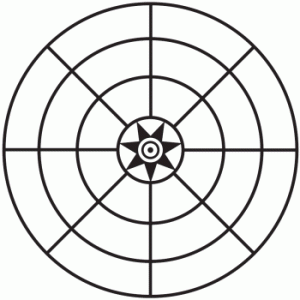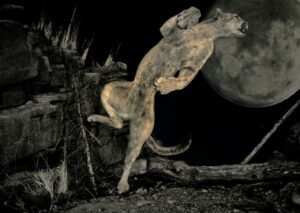MYSTICALPEDIA
METAPHYSICAL DICTIONARY
 Scrying
Scrying
[skri•ing]
A form of divination performed by gazing into reflective, translucent or luminescent surfaces such as a crystal ball, black mirror, smoke, fire or water
Seance
[say-ahnce]
A meeting, often lead by a psychic/medium, at which people attempt to make contact with spirits who have passed onto the other side
Sei He Ki
[say hay kee]
• Second degree Reiki Symbol
• Also known as the “Mental/Emotional” Symbol
• Used for healing mental and emotional disturbances
 Seven Principals
Seven Principals
The principals by which people adhering to the philosophy of Huna subscribe
The seven principals are as follows:
1. The World Is What You Think It Is (Ike)
2. There are no limits (Kala)
3. Energy Flows Where Attention Goes (Makia)
4. Now Is The Moment Of Power (Manawa)
5. To Love Is To Be Happy With (someone or something) (Aloha)
6. All Power Comes From Within (Mana)
7. Effectiveness Is The Measure Of Truth (Pono)
Shaman
[shah-mahn]
• Practitioner of Shamanism
• Interacts with the spirit world, is often known to the peoples as a ‘medicine man’.
Shamanism
[shah-muh-niz-uhm]
• Traditional belief system common to Native American, Toltec cultures and Huna belief systems, among others, which works with the spirit world, energetic healing and metaphysical beliefs
• For more, see shaman
Shapeshift
• To change physical form
•May be change of age, gender, race, etc. or from human to animal or plant form
Practiced in Native American and Huna belief systems, among others.
Silver Cord
• Cord made of etherial matter which connects our physcial body to our astral body.
• Also known as the astral cord or aka cord
Solstice
[sol-stis]
• Astronomical event when the earth’s axis tilts the furthest towards or away from the sun
• Associated with the Pagen festival of Yule
• Winter Solstice: The shortest day of the year
• Summer Solstice: The longest day of the year
Symbol [sim-buhl]
• An object or image that represents something else
• Example: An owl is often a universal symbol representing wisdom
Synchronicity
[sing-chro-ni-ci-tee]
• Theory formulated by Carl Jung
• Two similar or identical events or ideas happening at the same time, in different places with no apparent causal relationship


